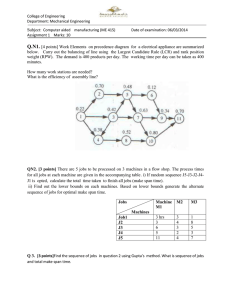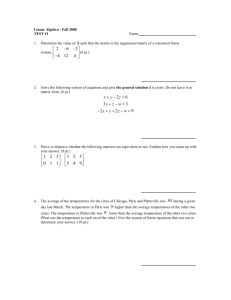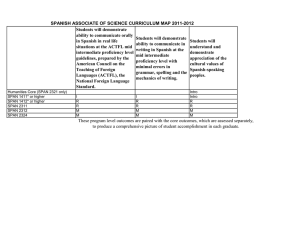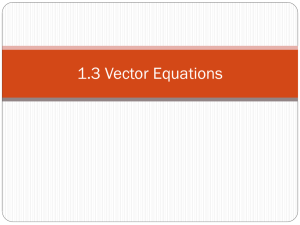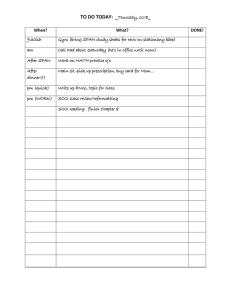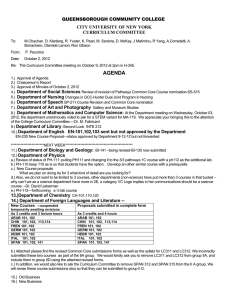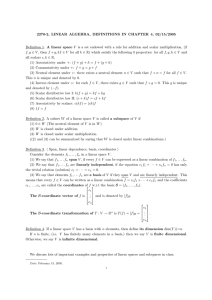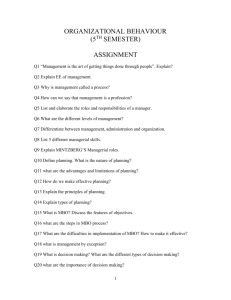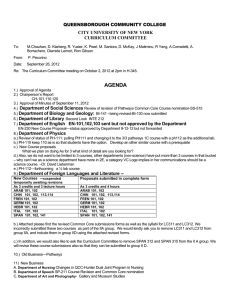Linear Algebra Exercises with Solutions - Week 3
advertisement
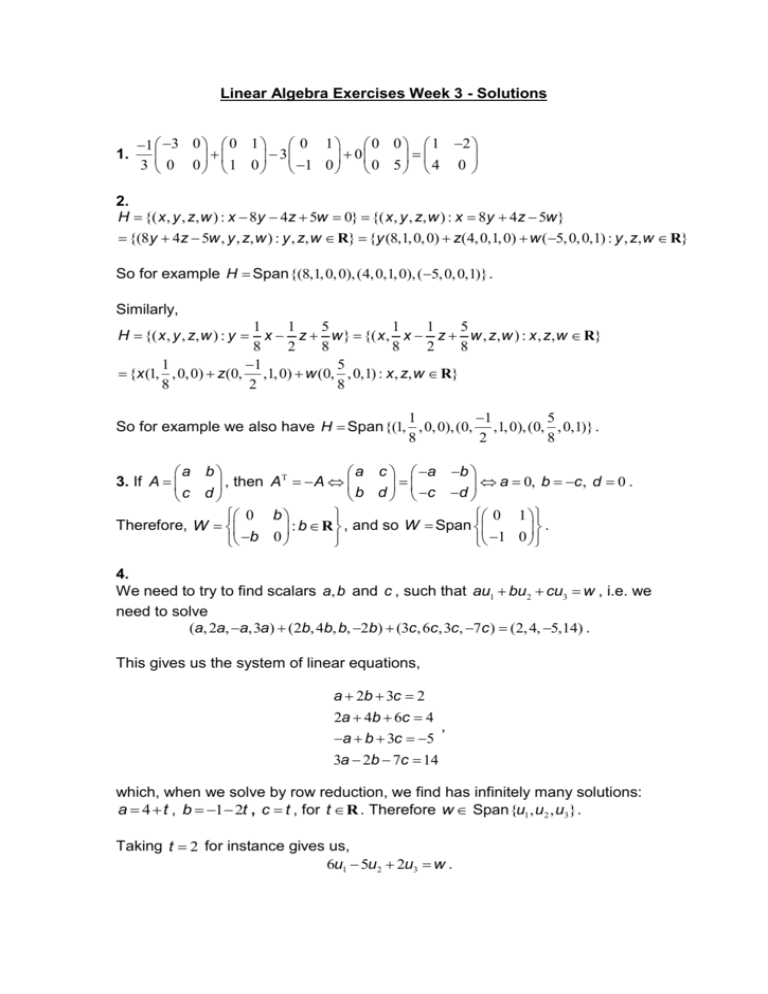
Linear Algebra Exercises Week 3 - Solutions
1.
1 3 0 0 1 0 1 0 0 1 2
3
0
3 0 0 1 0 1 0 0 5 4 0
2.
H {( x , y , z, w ) : x 8y 4z 5w 0} {( x , y , z, w ) : x 8y 4z 5w }
{(8y 4z 5w , y , z, w ) : y , z, w R} {y (8,1, 0, 0) z(4, 0,1, 0) w ( 5, 0, 0,1) : y , z, w R}
So for example H Span {(8,1, 0, 0), (4, 0,1, 0), ( 5, 0, 0,1)} .
Similarly,
1
1
5
1
1
5
H {( x , y , z, w ) : y x z w } {( x , x z w , z, w ) : x , z, w R}
8
2
8
8
2
8
1
1
5
{x (1, , 0, 0) z(0, ,1, 0) w (0, , 0,1) : x , z, w R}
8
2
8
1
1
5
So for example we also have H Span {(1, , 0, 0), (0, ,1, 0), (0, , 0,1)} .
8
2
8
a b
a c a b
T
3. If A
a 0, b c , d 0 .
, then A A
b d c d
c d
0 b
0 1
Therefore, W
: b R , and so W Span
.
b 0
1 0
4.
We need to try to find scalars a, b and c , such that au1 bu2 cu3 w , i.e. we
need to solve
(a, 2a, a,3a) (2b, 4b, b, 2b) (3c, 6c,3c, 7c ) (2, 4, 5,14) .
This gives us the system of linear equations,
a 2b 3c 2
2a 4b 6c 4
a b 3c 5
,
3a 2b 7c 14
which, when we solve by row reduction, we find has infinitely many solutions:
a 4 t , b 1 2t , c t , for t R . Therefore w Span {u1 , u 2 , u3} .
Taking t 2 for instance gives us,
6u1 5u2 2u3 w .
5. We need to find scalars a, b and c , such that ap1 bp2 cp3 q , i.e. we
need to solve at 2 2at a 2bt 2 5bt 4b ct 2 3ct 6c 3t 2 5t 5 .
Solving, by row reduction, the augmented matrix,
1 2 1 3
2 5 3 5
1 4 6 5
we find there is a unique solution, a 3, b 1, c 2, i.e. 3p1 p2 2p3 q .
6. Solving a(1, 2,3) b(2,5, 7) c (1,3,5) (0, 0, 0) , i.e the system of equation qith
1 2
augmented matrix, 2 5
3 7
namely a 0, b 0, c 0,
1 0
3 0 , we find that there is a unique solution,
5 0
and so the set of vectors is LI.
7. Since the zero vector is an element of this set, we see immediately that the
set is LD. (See Remark 2.7.12 in lecture notes.)
8. This is a simple exercise, and was shown in class and appears under
Remark 2.7.12 in lecture notes.
